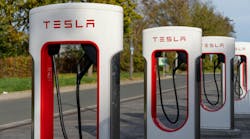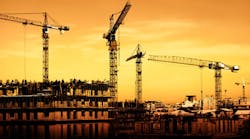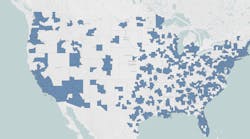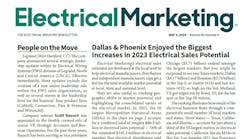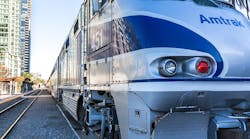If the Infrastructure Investment and Jobs Act recently passed by the U.S. Senate makes its way through the legislative gauntlet in the U.S. House of Representatives reasonably intact and is passed into law, the electrical construction industry should be able to cash in.
That’s because included in the $1.2 trillion Senate version of the legislation is $550 billion in new federal spending on America’s roads and bridges, high-speed broadband, the U.S. electrical grid, ports, airports and rail system, other forms of public transportation and electric-vehicle charging stations. Let’s take a look at the areas of spending that would seem to offer the most promise for electrical distributors, contractor, engineers and other electrical professionals.
High-Speed Internet
Bringing top-shelf broadband service to underserved rural and urban areas was popular with legislators on both sides of the aisle, and the bipartisan version of the bill would invest $65 billion to bring better internet to the more than 30 million Americans estimated to live in areas where there is no broadband infrastructure that provides minimally acceptable speeds. The White House fact sheets said the legislation will “help ensure every American has access to reliable high-speed internet with a historic investment in broadband infrastructure deployment, just as the federal government made a historic effort to provide electricity to every American nearly one hundred years ago.”
In addition, the White House fact sheet said, “The bill will also help lower prices for internet service by requiring funding recipients to offer a low-cost affordable plan, by requiring providers to display a “Broadband Nutrition Label” that will help families comparison shop for a better deal, and by boosting competition in areas where existing providers aren’t providing adequate service.”
Power Infrastructure
This is another big-ticket item in the legislation. The $65 billion investment in the U.S electrical grid would include building thousands of miles of new, resilient transmission lines to facilitate the expansion of renewable energy.
EV Infrastructure
Although the final version of the bill significantly reduced the amount the original legislation had earmarked for a national network of EV chargers, the bipartisan bill still includes $7.5 billion to build out the first-ever national network of EV chargers in the United States. A group of 29 U.S. House Democrats want congressional leaders to include at least $160 billion in additional funding for electric vehicles as part of a $3.5 trillion spending measure, according to a letter seen by Reuters.
Airports, Ports & Waterways
There are some big dollars in the bipartisan bill for spending in this area. According to the White House fact sheet, “The bill invests $17 billion in port infrastructure and $25 billion in airports to address repair and maintenance backlogs, reduce congestion and emissions near ports and airports, and drive electrification and other low-carbon technologies.”
Passenger & Freight Rail
Companies with a focus on mass transit projects along the Eastern Seaboard will be happy to know that the legislation could include a total of $66 billion in spending to upgrade Amtrak passenger service along the Northeast Corridor; improve intercity rail service; build high-speed rail infrastructure; and make grade crossing safety improvements. According to the White House, it’s the largest investment in passenger rail since the creation of Amtrak 50 years ago. Some related spending on public transit may spark the construction of additional bus or train stations and help fund the purchase of electric school buses.
Roads & bridges
There could be plenty of federal money for roadway lighting in the bill’s $110 billion for roads and bridges. According to a White House’s Infrastructure Investment and Jobs Act fact sheet, “The bill includes a total of $40 billion in new funding for bridge repair, replacement and rehabilitation, which is the single largest dedicated bridge investment since the construction of the interstate highway system.”


